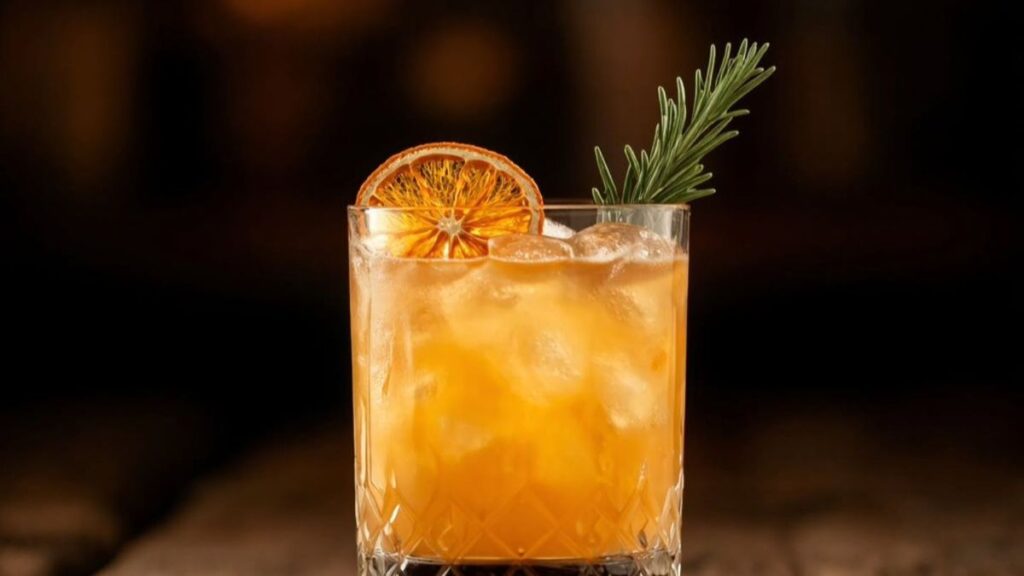The mezcal old fashioned is a modern twist on a time-honored classic, a drink that trades the rye or bourbon heart of the original for the smoky, earthy soul of mezcal. This swap does more than change the base spirit; it alters the drink’s texture, aroma, and cultural story. While the Old Fashioned began as a minimalist celebration of whiskey, the mezcal old fashioned invites curiosity: it asks drinkers to slow down and notice the subtle vegetal notes, the charred agave sweetness, and the balance between smoke and sugar. In this article you will learn the history behind the drink, the precise ingredients and equipment you need, step-by-step technique to make a perfect mezcal old fashioned, creative variations, sensible pairing suggestions, and answers to common questions. The goal is to make the recipe approachable for beginners while providing enough nuance for enthusiasts.
A short history of the Old Fashioned and the mezcal twist
The Old Fashioned originally emerged in the early 19th century as a reaction against fashionable, multi-ingredient cocktails; it was a return to the “old-fashioned” way of drinking spirits with just sugar, bitters, and water. For most of its life it was associated with whiskey, especially rye and later bourbon. Mezcal, a distilled spirit made from roasted agave hearts in Mexico, has its own deep history dating back centuries. The marriage of mezcal and the Old Fashioned is modern but intuitive: mezcal’s smoky, mineral-driven profile stands up to bitters and sugar, and it contributes an aromatic complexity unlike any whiskey-based version. Bartenders and home mixologists started experimenting with this pairing in the last decade, and it has since become a popular way to showcase mezcal’s character without overwhelming it with fruit-forward mixers or too many sweeteners.
What mezcal brings to the mix
Mezcal brings three standout elements to the old fashioned blueprint: smoke, agave-derived sweetness, and a mineral or earthy backbone. The smoke comes from the traditional roasting of agave hearts in earthen pits, which gives mezcal its signature charcoal and bonfire notes. The natural sweetness of cooked agave balances bitter and herbal flavors, and the mineral finish gives the cocktail an intriguing aftertaste that lingers on the palate. Unlike smoky Scotch, mezcal is often fruity and floral beneath the smoke, which allows it to play nicely with both aromatic and citrusy bitters.
Ingredients and tools for a flawless mezcal old fashioned
To make a great mezcal old fashioned, you do not need a complicated bar or an array of rare liqueurs; you only need quality ingredients and a mindful technique. Start with a good mezcal—if you are new to the spirit, choose a joven (unaged) or joven/ancho blend that offers clear smoke, agave sweetness, and modest alcohol heat. Use a sugar cube or a neutral simple syrup to sweeten; the sugar tames the spirit without stealing the spotlight. Bitters are essential: aromatic bitters like Angostura are classic, while orange or mole bitters bring complementary flavors that enhance the mezcal’s profile. A large ice cube or clear sphere chills the drink without diluting it quickly, and a short rocks glass gives you the sensory experience of a true Old Fashioned.
Below is a quick reference table with ingredient choices and suggested alternatives to help you customize the drink based on taste and availability.
| Role | Recommended Option | Alternative |
|---|---|---|
| Base spirit | Joven mezcal (50–46% ABV) | Reposado mezcal for added roundness |
| Sweetener | 1 sugar cube or 10–12 ml simple syrup (1:1) | Agave nectar (use sparingly) |
| Bitters | 2-3 dashes aromatic bitters | 2 dashes orange bitters, 1 dash mole or chocolate bitters |
| Garnish | Orange peel, expressed | Charred grapefruit peel or cinnamon stick |
| Ice | Large clear cube | Two large cubes or a chilled sphere |
Step-by-step: How to make the mezcal old fashioned
Start by selecting a clean rocks glass and a large ice cube. Place the sugar cube in a mixing glass and add the bitters directly to the cube so the sugar absorbs the aromatic oils and bitter compounds. If you prefer simple syrup, combine sugar and neutral water in a small container and use the syrup to sweeten—this will integrate more quickly. Muddle the sugar gently; avoid pulverizing it into powder because that prevents gradual dissolution and tracking of flavor. Add the mezcal, then stir with a bar spoon for about 20 to 30 seconds to chill and dilute the spirit to the ideal drinking strength. The aim is to bring the cocktail to around 20–25% ABV in the glass, which highlights aromatics and smooths the spirit’s edges. Strain into your rocks glass over the large ice cube. Express an orange peel over the drink to release volatile oils, and rub the peel’s rim against the glass before dropping it in as a garnish.
Technique matters as much as ingredients. Stirring rather than shaking preserves the mezcal’s aromatic top notes and keeps the texture silky. Always taste and adjust: if the drink tastes too sharp, add a small splash more syrup; if it’s too sweet, introduce another dash of bitters. When using agave nectar, remember that it is richer than simple syrup, so reduce the amount to avoid cloying results.
Timing, dilution, and temperature
Timing your stir is a key skill. A quick 15-second stir will cool the drink but leave it a bit intense; 30 to 40 seconds will introduce desirable dilution and make the flavors sing. Aim for a temperature just above full chill—cold enough to be refreshing but not so cold that aromas are numbed. The large ice cube melts slowly, providing consistent dilution. If you plan to sip slowly, you may prefer a slightly larger ice sphere to maintain balance over a longer stretch.
Variations and flavor experiments
There are many creative paths to explore once you master the classic mezcal old fashioned. For those who prefer a spicier finish, a dash of mole bitters or a cardamom tincture can add depth without dominating the mezcal’s character. If you want a fruit-forward twist, muddle a thin slice of ripe pear or a sliver of blood orange before adding mezcal; these fruits add ephemeral freshness that complements the agave. For a smoky-sweet hybrid, replace part of the sugar with a small measure of mezcal-based liqueur or a smoky amaro. Another interesting variation is to age the completed cocktail briefly in a small oak barrel or with a charred oak chip; this adds wood notes and softens the edges but requires restraint to avoid overwhelming the agave.
A low-ABV version can be crafted by using half the mezcal and topping with a splash of chilled, lightly carbonated water and a twist of citrus. This keeps the flavor profile recognizable while making the drink more sessionable.
Food pairings and occasions
The mezcal old fashioned pairs exceptionally well with dishes that can stand up to smoke and mineral notes. Grilled or roasted meats, dishes with charred vegetables, and strong cheeses like aged Manchego harmonize beautifully. For lighter fare, consider pairing with citrus-forward ceviche where the cocktail’s smoke contrasts with bright acidity, creating an exciting interplay on the palate. The mezcal old fashioned also works as a contemplative aperitif or a relaxed nightcap; it is the kind of drink that suits slow conversations and foods with bold, earthy flavors.
Choosing mezcal: tips for buying and tasting
When you shop for mezcal, start with bottles that clearly indicate the type of agave and the region of production. Espadín is the most common agave used in commercial mezcal and offers a good balance of smoke and sweetness. Try a blend that lists both espadín and a wild agave (like tobala) if you want complex floral notes on top of smoke. Check for labels that indicate artesanal or ancestral production methods if you care about traditional roasting and fermentation techniques, which often result in more pronounced smoky character. Tasting mezcal neat before mixing it into a mezcal old fashioned is wise—this lets you anticipate which nuances will come forward when combined with sugar and bitters.
Common mistakes and how to avoid them
A common mistake is using a mezcal that is either too aggressively smoked or too young-tasting without body; either extreme can upset the cocktail’s balance. Another pitfall is over-sweetening: because mezcal offers natural agave sweetness, many novices add too much sugar. Start conservatively and taste. Using the wrong type of bitters is another error—avoid fruity, heavy liqueur-like bitters that compete with mezcal’s subtle floral notes. Finally, shaking a mezcal old fashioned can bruise delicate aromatics; stick to stirring for best results.
A short tasting glossary for the mezcal old fashioned
To understand the drink and describe it accurately, here are a few tasting terms you will encounter. Smoke refers to the charred agave pit flavors—think bonfire, charcoal, or toasted wood. Earthiness denotes mineral, root-like notes that ground the cocktail. Agave sweetness is the gentle, caramelized sugar character derived from cooked agave. Bitters contribute a concentrated aromatic backbone—spicy, floral, or citrusy—depending on the type chosen. Balance is the harmonious relationship between spirit, sugar, and bitters; a well-balanced mezcal old fashioned will have each element present without any single component dominating.
Conclusion: Savoring the mezcal old fashioned
The mezcal old fashioned is more than a cocktail; it is a small exploration of place and process, a way to celebrate agave’s smoky, mineral poetry in a format that respects restraint and clarity. Making this cocktail well requires simple discipline: choose a mezcal you enjoy, sweeten sparingly, stir to the right dilution, and express a citrus peel for aromatic lift. Once you master the classic formula, the variations and pairings invite experimentation without losing the drink’s essential character. Whether you are introducing mezcal to friends or enjoying a quiet evening at home, the mezcal old fashioned rewards attention and slow sipping, revealing new layers with every round.
If you would like, I can provide a printable recipe card, a shopping checklist with suggested mezcal brands for different budgets, or guided tasting notes to help you choose the right mezcal for your palate.
Frequently Asked Questions (FAQs)
What is a mezcal old fashioned and how does it differ from a whiskey old fashioned?
A mezcal old fashioned is a variation of the classic Old Fashioned where mezcal replaces whiskey as the base spirit. The primary difference lies in flavor: mezcal introduces smoky, mineral, and agave-derived sweetness, while whiskey versions emphasize malt, caramel, and oak. The preparation—sugar, bitters, and stirring—remains similar, but the aromatics and finish change notably due to mezcal’s unique production.
How strong should the mezcal be in this cocktail?
The mezcal should be a full-spirited choice, often in the 42–50% ABV range for robust flavor. When mixed and properly diluted through stirring and a large ice cube, the drink settles into a balanced strength suitable for sipping. Choose a mezcal you enjoy neat, because its character will be prominent.
What bitters work best in a mezcal old fashioned?
Aromatic bitters like Angostura are a safe starting point. Orange bitters enhance citrus oils from the expressed peel, while chocolate or mole bitters can deepen complexity and complement the agave sweetness. Experimentation is encouraged, but avoid bitters with heavy floral syrup notes that can clash with mezcal’s smoky profile.
How much sugar or sweetener should I use?
Start with one sugar cube or 10–12 ml of simple syrup (1:1). Taste after stirring and add only if the cocktail feels too sharp. With agave nectar, use less than you would simple syrup because it is richer; a small half-teaspoon can be enough.
Can I make a mezcal old fashioned with reposado or añejo mezcal?
Yes, reposado or añejo mezcals add oak-driven roundness and vanilla notes. These aged styles can produce a softer, more dessert-like old fashioned. Adjust the sugar downward to account for the spirit’s added sweetness from barrel aging.
Are there non-alcoholic alternatives that capture this profile?
Non-alcoholic mocktails can mimic some aspects by using a smoky tea or smoked simple syrup to emulate smoke, plus an agave-forward syrup for sweetness and non-alcoholic bitters for depth. While it won’t fully replicate mezcal’s complexity, a carefully constructed mocktail can offer a similarly enjoyable drinking experience.







